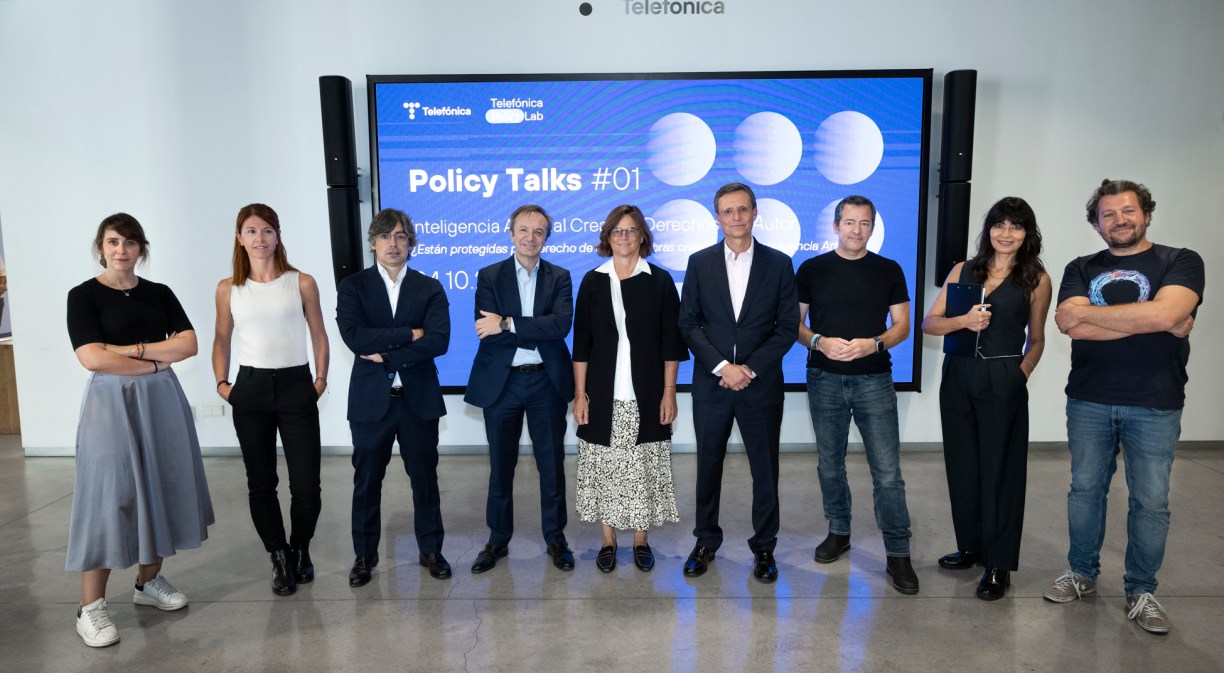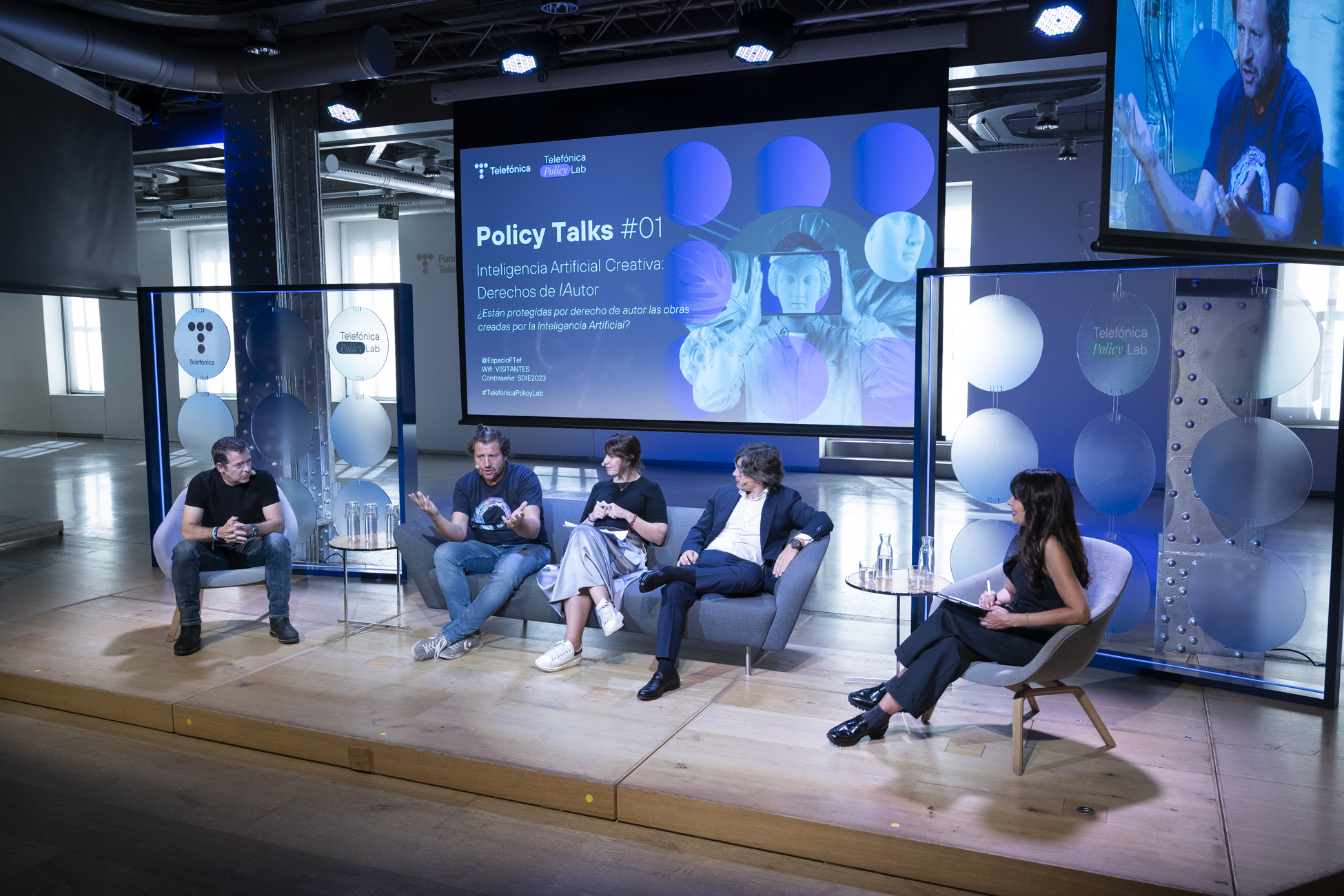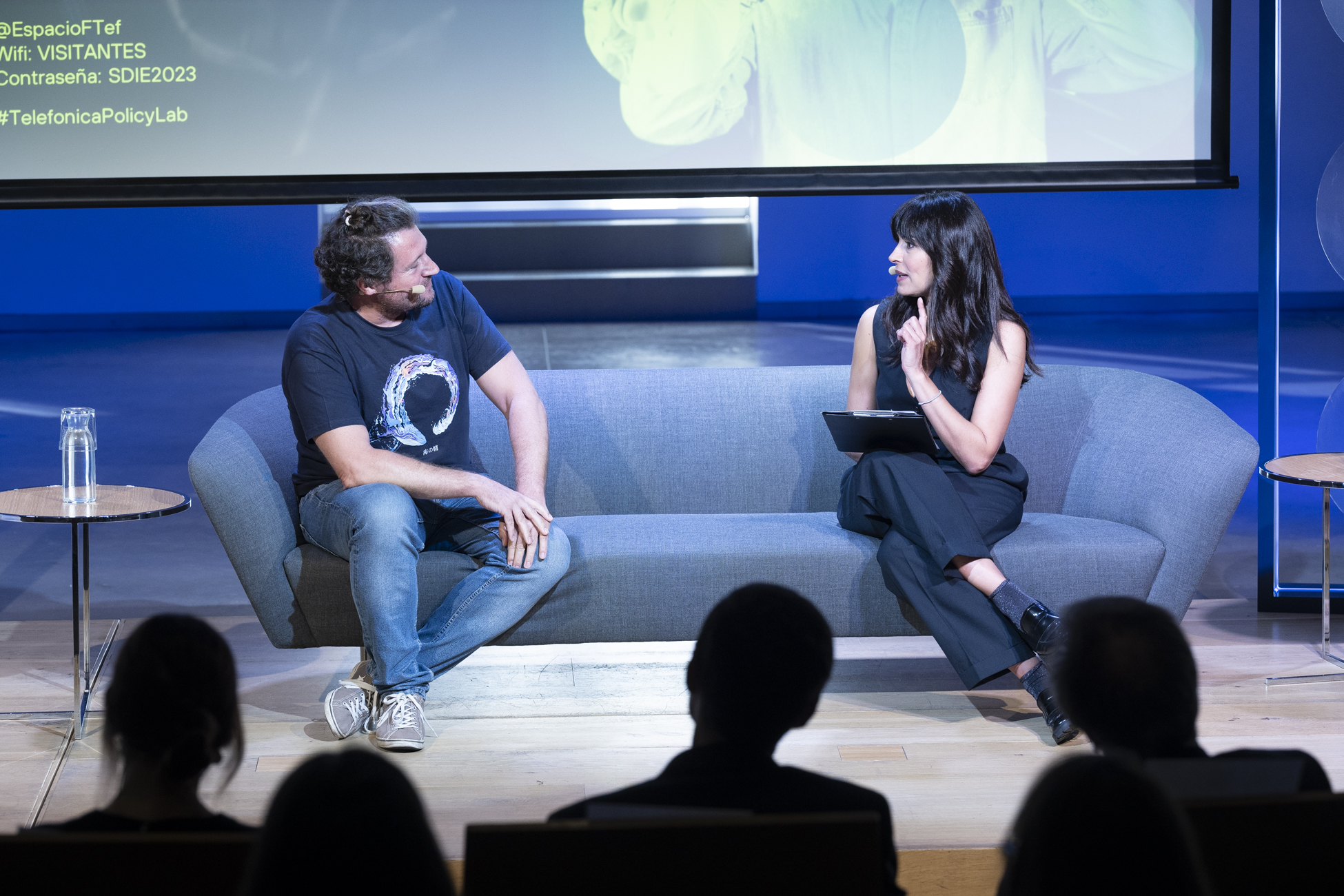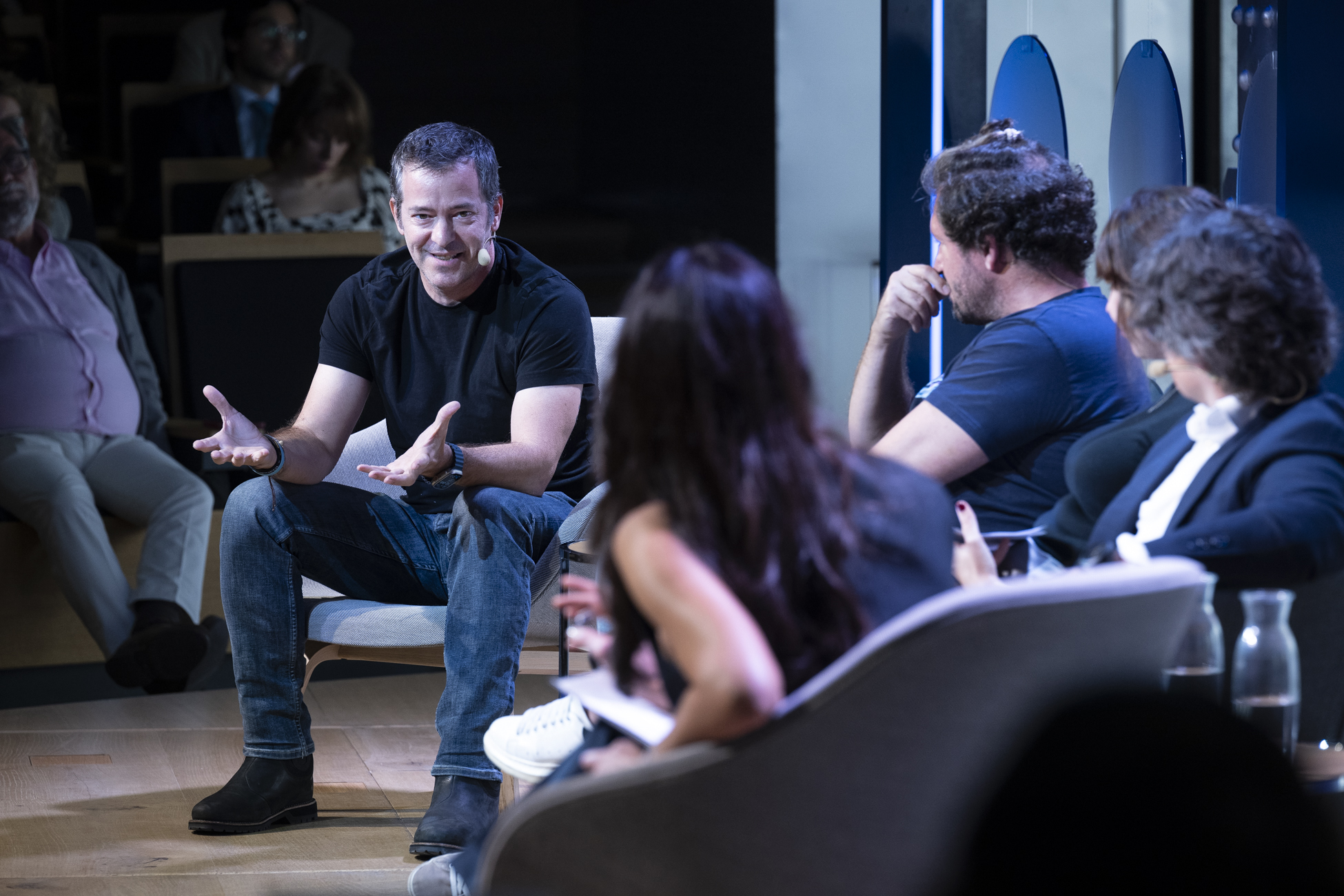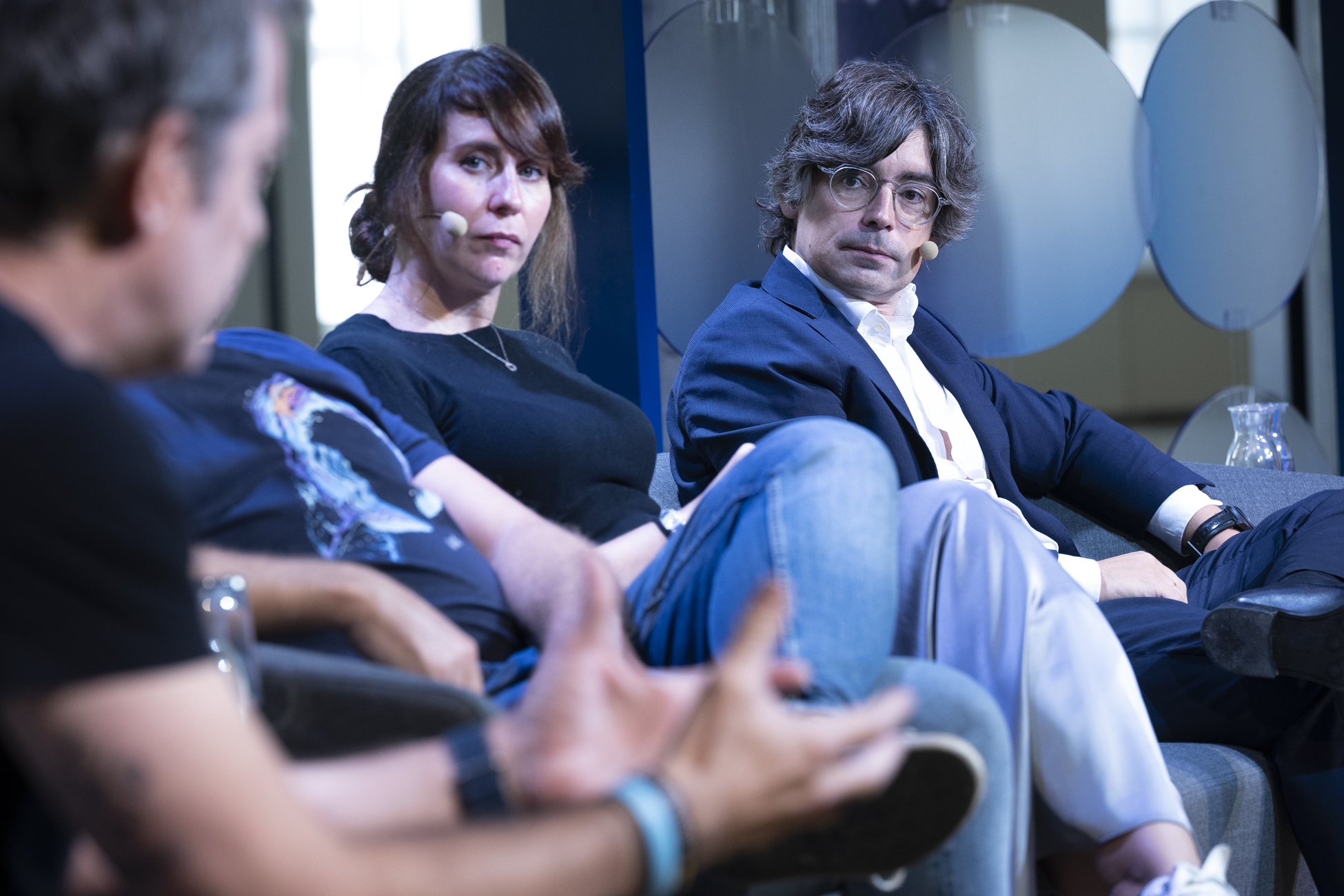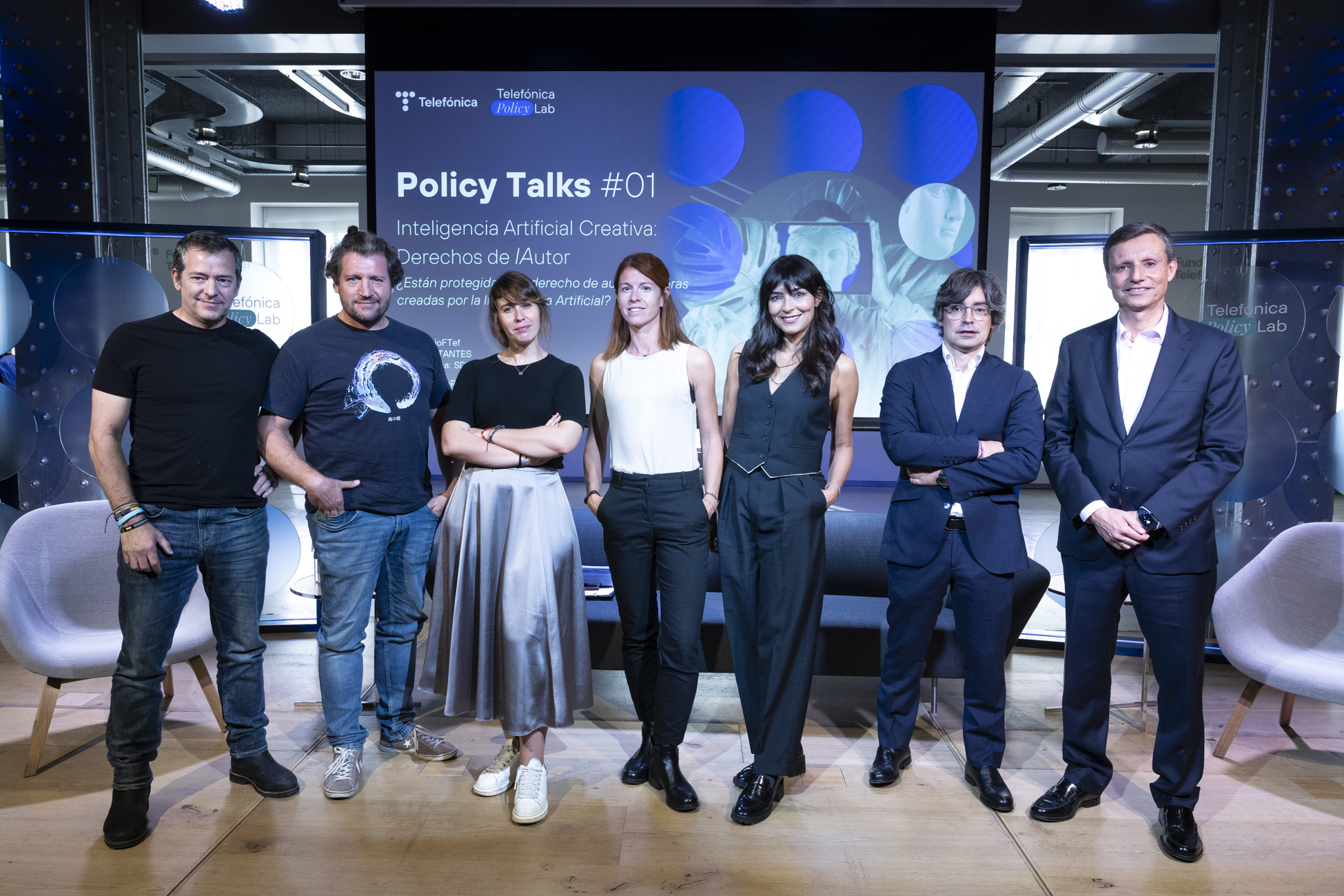On October 4th, the inaugural Policy Talks event was held at Espacio Fundación Telefónica, as part of Telefónica Policy Lab. This initiative serves as a prominent platform for experts and figures from both the public and private sectors, academia, and civil society to engage in discussions about critical issues shaping the digital era.
Titled “Creative Artificial Intelligence: Copyright,” the event centered around exploring the challenges and opportunities presented by generative Artificial Intelligence (AI) in the realm of intellectual property and copyright.
To address the subject from different angles, the event was attended by different voices. Among them, Carmen Páez Soria, director general of Cultural Industries, Intellectual Property and Cooperation, Abraham López, writer, filmmaker and academic director of Animation and VFX at the U-Tad, and from the private sector, David Hurtado, head of innovation at Microsoft, and Clara Ruipérez de Azcarate, director of the Content Legal Strategy Unit at Telefónica.
Finally, Alejandro Touriño, managing partner of ECIJA, contributed the legal component to the debate. The debate was moderated by journalist and writer, Marta Fernández. Carmen Morenés, Director General of Fundación Telefónica, and Juan Montero, Chief Public Policy, Competition & Regulatory Office, were in charge of welcoming and presenting the Telefónica Policy Lab initiative.
The impact of the first industrial revolution on intellectual property
Marta Fernández opened the event by providing a historical perspective on the challenges posed by the technological revolution in intellectual property. She emphasized that the current vigorous debate surrounding intellectual property rights, triggered by the rapid ascent of generative AI, is a continuation of a debate that spans centuries.
In 1842, during a time of significant upheaval brought about by the advent of the printing press, Charles Dickens found himself in a situation where his books were being sold in large quantities without him receiving any compensation. Recognizing the need for a more robust understanding of copyright in response to the challenges presented by this new technology, Dickens, leveraging his popularity and influence, advocated for change.
Dickens had a profound grasp of the fact that new technology had the potential to fundamentally reshape the cultural and copyright landscape.
Now, we are facing a new disruption that has a major impact on intellectual property; generative AI.
Creative Artificial Intelligence in the Creative Industry
Intentionality is intrinsically human. Artificial intelligence cannot replace it.
What has the advent of artificial intelligence meant for the work of a creator like Abraham López? “The first thing is that he has many doubts and questions, and he is studying, investigating, and testing“.
In his vision, generative AI is a complement to the creator: “You are Batman and artificial intelligence is the Batmobile“. It is a tool that makes the making of works more viable and productive. The challenge is not the technology itself, but for other, more innovative creators who see the potential of generative AI to assimilate it and learn to use it better. This would make them pioneers in the industry, leaving more traditional or change-averse creators behind.
AI will not replace authors: the emotional narrative and intentionality that people bring is difficult for technology to replicate in the creation of new and transformative works. It is people who provide the disruptive factor of creativity and originality.
In creation there is chaos. Only the creator knows what goes on in his mind.
Copyright in the Spotlight
The panel tried to answer the question: ‘Are works created by Artificial Intelligence protected by copyright?’
In the debate, two distinct aspects were differentiated when attempting to answer this question. The first aspect pertains to ensuring that, during the creation process, a generative AI utilizes data while adhering to copyright and privacy regulations, among others. The second aspect, the subject of the debate, relates to the output – that is, the result or work generated by the generative AI and its impact on copyright as currently defined.
One of the challenges associated with generative AI is the sources from which the algorithm is trained to generate content. David Hurtado explained that, like humans, AI learns. This technology doesn’t possess its own database of images, videos, text, or music; it is pre-trained using publicly available content from the Internet.
Regarding the work created by generative AI, Alejandro Touriño noted that there is currently no direct regulation addressing this issue. In this context, Carmen Páez pointed out the contrasting views on intellectual property between the United States, which leans towards a more commercial perspective, and Europe, which adopts a more humanistic approach.
In Spain, presently, only humans benefit from copyright protection. However, the degree of human intervention in AI-generated work poses a dilemma. Defining the extent of human involvement necessary to consider a person as an author is a legally indeterminate concept, as it must be evaluated on a case-by-case basis, as explained by Páez.
Another aspect discussed was the originality of the work created by AI – whether it’s truly innovative or merely imitating aspects of the content it was trained on. Touriño emphasized the importance of being able to answer this question technically, considering the extensive reach of AI.
Regarding the identification of content created by AI, Touriño pointed out that implementing a transparency mechanism is essential to confirm whether a work has been generated by this technology.
Lastly, Clara Ruipérez de Azcarate underscored the significance of addressing both aspects of this challenge and highlighted the rapid pace of technological progress as the primary challenge. This underscores the need for cooperative efforts to find the most suitable responses.
In conclusion, the debate raised open questions that will require collective effort and collaboration to navigate the intersection of humanistic values and technological progress.

